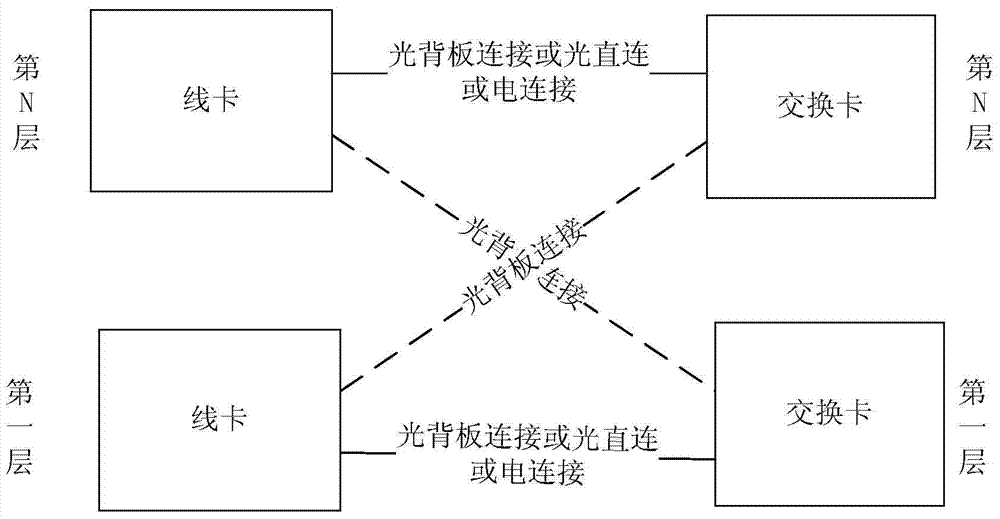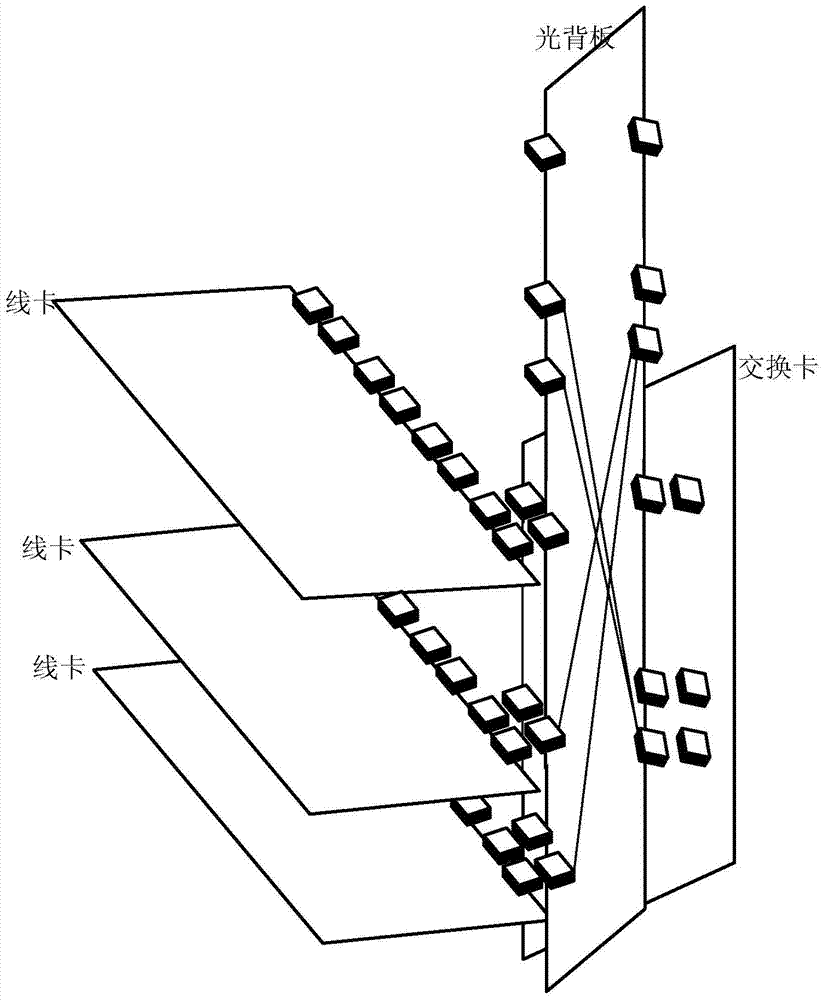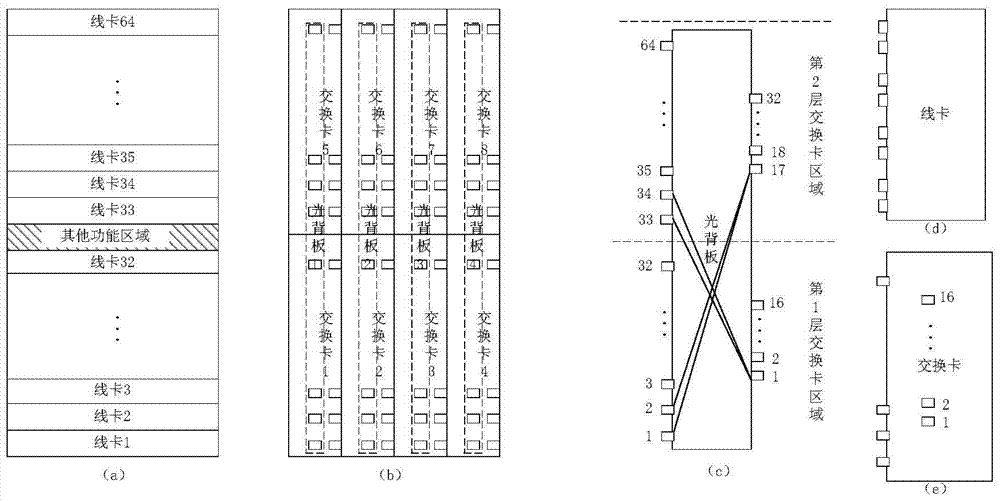Optical backplane sub-frame device
A technology of optical backplane and rack device, applied in the direction of selection device, light guide, optics, etc., can solve the problems of large optical insertion loss and large optical switching card, and achieve the effect of improving integration, high capacity and reducing cost
- Summary
- Abstract
- Description
- Claims
- Application Information
AI Technical Summary
Problems solved by technology
Method used
Image
Examples
Embodiment 1
[0079] All line cards and switch cards are connected by optical paths, links on the same layer are directly connected through optical connections, and links on different layers are connected through optical backplanes.
[0080] Such as figure 2 As shown in , one or more layers of switch cards are inserted vertically on the back of the subrack, and all line cards are inserted horizontally on the front. The optical backplane and the switch cards overlap in parallel. Links where line cards and switch cards are not on the same layer are connected through optical backplanes.
[0081] image 3 In the figure, take the subrack on the second floor as an example, a is the front of the subrack, all line cards are inserted horizontally, b is the back of the subrack, all switch cards are inserted vertically, and the dotted frame is the optical backplane, which is installed inside the switch card. It overlaps with the switch card in parallel, c is the optical backplane, d is the line car...
Embodiment 2
[0084] Line cards and switch cards are connected through optical hybrid, and links on the same layer are connected through electrical connectors ( Figure 4 The black connector in ) is directly connected, and the links of different layers pass through the optical backplane (the optical connector is Figure 4 middle white connector).
[0085] Such as Figure 4 As shown in , one or more layers of switch cards are inserted vertically on the back of the subrack, and all line cards are inserted horizontally on the front. The optical backplane and the switch cards overlap in parallel. Links where line cards and switch cards are not on the same layer are connected through optical backplanes.
[0086] Figure 5 In the case of a 2-layer subrack, 32 line cards are placed on the upper and lower layers of the front. The line cards have 8 connectors on the backplane side, of which 4 optical connectors are connected to 4 optical backplanes, and 4 are electrically connected to The connec...
Embodiment 3
[0089] All line cards and switch cards are optically connected through the optical backplane, and the optical backplane overlaps with the switch cards.
[0090] Such as Image 6 As shown in , one or more layers of switch cards are inserted vertically on the back of the subrack, and all line cards are inserted horizontally on the front. The optical backplane and the switch cards overlap in parallel. The optical backplane is connected.
[0091] Figure 7 In the case of a 2-layer subrack, 32 line cards are placed on the upper and lower layers of the front. The line cards have 4 optical connectors on the backplane side, and these 4 optical connectors are connected to 4 optical backplanes. There is a row of connectors on the switch card, and this row is an optical connector connected to the optical backplane in the board, which connects the line cards of all layers through the optical backplane. The optical backplane is also designed based on two layers. The two sides of the opt...
PUM
 Login to View More
Login to View More Abstract
Description
Claims
Application Information
 Login to View More
Login to View More - R&D
- Intellectual Property
- Life Sciences
- Materials
- Tech Scout
- Unparalleled Data Quality
- Higher Quality Content
- 60% Fewer Hallucinations
Browse by: Latest US Patents, China's latest patents, Technical Efficacy Thesaurus, Application Domain, Technology Topic, Popular Technical Reports.
© 2025 PatSnap. All rights reserved.Legal|Privacy policy|Modern Slavery Act Transparency Statement|Sitemap|About US| Contact US: help@patsnap.com



